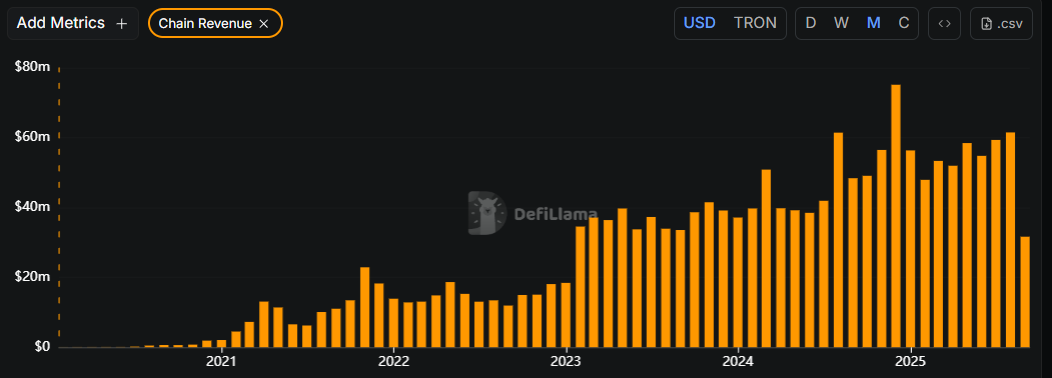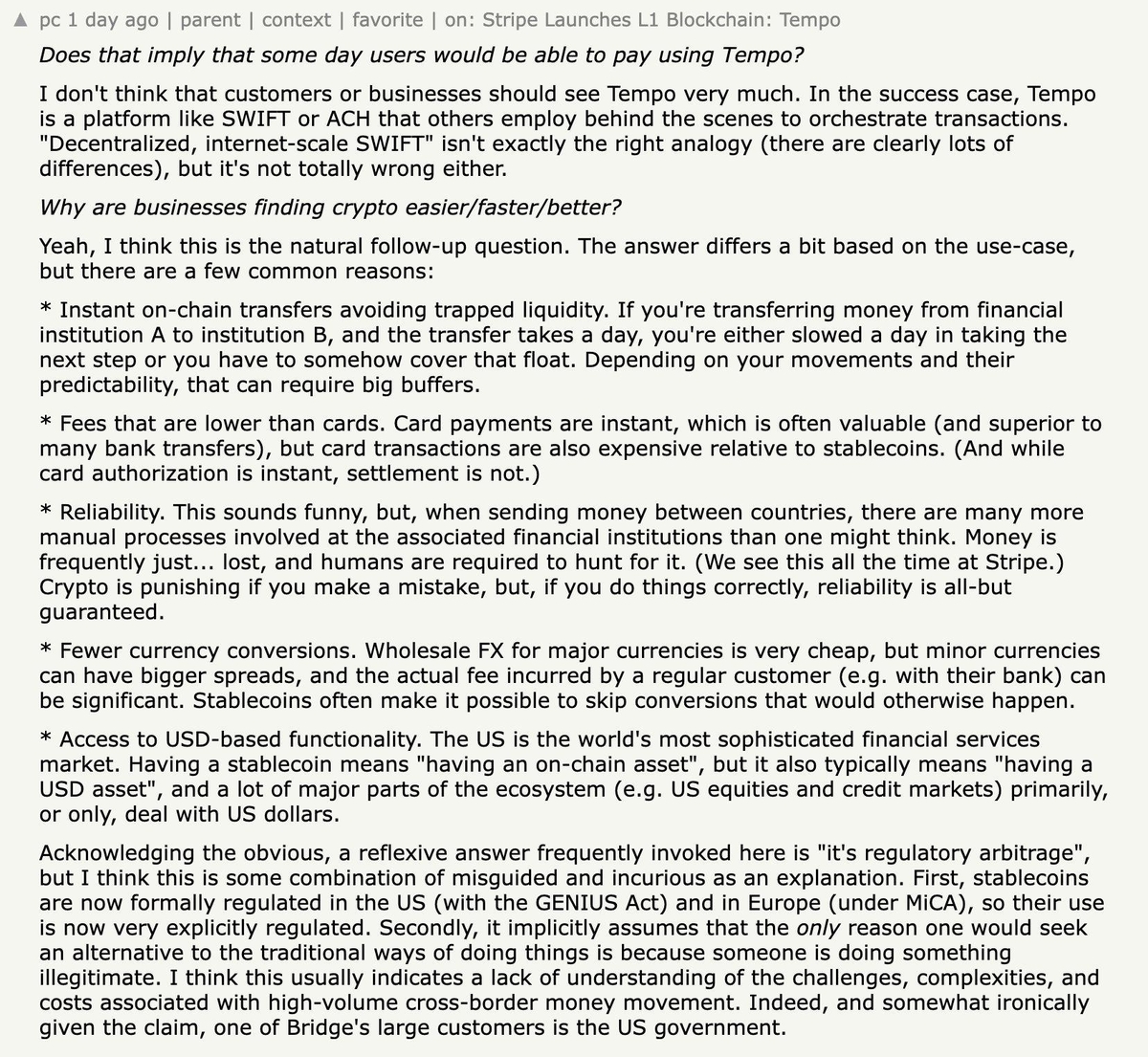Disclaimer: This is not financial advice. Anything stated in this article is for informational purposes only and should not be relied upon as a basis for investment decisions. Triton may maintain positions in any of the assets or projects discussed on this website.
TL;DR
Hot Summer… Stablecoins
The stablecoin world has been red hot these past few weeks, so we will take this opportunity to provide a quick recap of what has happened – and we’ll also note that updates like this may become a recurring theme. It has been your author’s long-held belief that stablecoins are poised to fundamentally restructure the payments landscape, and the signs of that happening are starting to become far more frequent and prominent. For a refresher on the stablecoin landscape, readers can revisit our May piece here: Stablecoins Will Eat the World. When we wrote that post, total stablecoin supply was $239B. Since then, roughly 5 months later, there is now $296B onchain – a cool 24% increase over that span. There was $4B added in just the last week alone, so by the time you read this we will have likely cracked $300B. Roughly 80% ($250B) of this remains USDT and USDC, with hundreds of others making up the remaining ~$45B.

Stablecoin Summer
Big numbers get to go first.
Tether, by far the market leader in stablecoins, just announced earlier this week that they were exploring a $20 billion raise at an eye-popping $500B, placing the USDT issuer very much in the running for the most valuable private company in the world. Its half-trillion-dollar private counterparts? OpenAI, SpaceX and Tiktok parent ByteDance. If it were a public company, Tether’s valuation puts it right alongside Netflix ($514B), Mastercard ($512B), and Exxon Mobil ($502B). That puts them a single bad-trading day away from being a top 20 largest company in the world. Not bad at all for a company of 150 people!
(Author’s note: Remember, the above-mentioned SpaceX is already enabling global stablecoin payments via its Starlink satellite network. And we’ll get back to those OpenAI folks shortly…)

Amazingly, that might not even be the most impactful news for Tether of late. There have been a few other developments under the hood that likely helped investors (including Softbank and Ark Invest) get comfortable with that valuation.
Historically, Tether has avoided direct operations in the US for myriad reasons – including multiple legal and regulatory run-ins with US agencies over the years. But times have very much changed with the new administration’s embrace of digital assets, and Tether has now turned its focus squarely on entering the US market. Their first big move? Announcing the hiring of Bo Hines to lead Tether’s US strategy. Those familiar with digital assets may recognize that name: Bo Hines had previously served as the executive director for the White House’s crypto council, overseeing the administration’s efforts towards, among other things, coordinating the recent digital asset legislation (GENIUS and Clarity) and the formation of the sovereign strategic bitcoin and digital asset reserves earlier this year.
Tether then followed that hiring announcement up with another: the upcoming launch of USAT, a new fully US-regulated stablecoin designed to be fully GENIUS-compliant and technically issued by Anchorage Digital, a federally chartered digital asset bank. All treasury reserves will be managed by current US Secretary of Commerce Howard Lutnick’s family-run firm, Cantor Fitzgerald. With this announcement, it was also confirmed that new hire Bo Hines will now serve as the CEO of USAT, tasked with overseeing the US expansion. Needless to say, these close ties with current and former White House officials, coupled with the fully regulation-focused entry into the US market, are a far cry from the US-regulation dodging Tether of old.
As perhaps a cherry on top of its $500B sundae, Tether also benefits from the launch last week of a new stablecoin-focused chain called Plasma. Deemed by many in the market to be Tether’s de facto native chain (it is not officially), Plasma has exploded onto the scene with much fanfare. It is designed from the ground up to enable global stablecoin payments, providing free USDT transfers and native integration of USDT as a network gas token. Plasma launched last week at a nearly $10B valuation (now up to $13B at the time of writing) and attracted over $14B of capital in its first few days (Aave has almost $7B of that, naturally). While the long-term success of the project remains to be seen (this $14B feels very high relative to its actual traction), most seem to be treating the native token of Plasma, XPL, as the only public way to get exposure to Tether’s exploding business. The tight integration of the chain with USDT (and Tether involved as investors), immediately places Plasma as a contender for the leading “stablecoin chain” crown given USDT’s global adoption (estimated 500M users around the world). One comparison many make is to Tron, an EVM L1 heavily used for stablecoin payments in Africa, South America and Asia. Of Tether’s $175B, nearly $75B of that is on Tron; there is not much DeFi or other activity to speak of on the chain. But from the organic use of Tron as a global payments rail (for both savoury and unsavoury activity alike), it generates roughly $60M per month in revenue and is currently trading at a $32B market cap. If Plasma is successful in overtaking Tron’s distribution, the upside from its current $13B remains enormous.

However, that remains a big *if.
Tether is not alone in its (vertical) expansion into the stablecoin stack. The second largest issuer, Circle (USDC), announced its own native chain called Arc, specifically designed for global stablecoin commerce. With Arc, USDC will be the native gas token (as opposed to e.g. ETH on Ethereum, SOL on Solana), with enshrined foreign exchange capabilities (24/7 settlement and institutional RFQ), built in transaction privacy features and, naturally, fully integrated with Circle’s entire suite of other products: EURC, USYC (onchain treasuries), wallets, crosschain bridges and account abstractions. Whereas Tether has traditionally been used by retail and crypto-native companies, USDC is very much positioning itself as the de facto enterprise-grade stablecoin option.
But that assumes global payment companies don’t have anything to say about that. Not to be outdone, Stripe also announced its own stablecoin-focused chain called Tempo in partnership with a who’s who of global AI, e-commerce and financial institutions: OpenAI, Shopify, Anthropic, Visa, Revolut, Coupang, Deutsche Bank, DoorDash, Lead Bank, Mercury, NuBank, and Standard Chartered, among others. As much as your author would like to pretend he is a global payments expert, he sadly is not, so instead we’ll just let Stripe’s CEO, Patrick Collison, explain why one of the top payments companies in the world sees value in adopting stablecoin technology:

Speaking of SWIFT - an initial report came out suggesting SWIFT is working on its own onchain messaging and settlement system, with the development of an ‘interbank token’, created in partnership with ‘more than a dozen’ banks.
Naturally Big Tech isn’t going to just sit back and let all this happen without getting involved. Not explicitly reported to be stablecoin-focused, but it was very casually released that Google has been in deep development of its own blockchain to provide a ‘neutral, global blockchain’ for financial purposes called Google Cloud Universal Ledger (GCUL). Given that Google Cloud has a ~13% global cloud market share and billions of daily users around the world, one has to imagine their chain has the potential to be enormously impactful, especially when combined with their Gemini AI capabilities – currently at 20% (and rapidly rising) enterprise LLM market share.

While on the topic of AI and internet traffic, that brings us to one of the dark horses in the stablecoin race: Cloudflare. For those unfamiliar, Cloudflare is the leading CDN and top cybersecurity company, valued at $75B. Despite being less of a household name, we likely interact with Cloudflare technology more than any other company mentioned in this post: Cloudflare handles nearly 63 million HTTP(S) requests per second – essentially acting as the go-between technology when accessing a website through any internet browser. It is estimated that roughly 20% of internet websites use Cloudflare. And just earlier this week, Cloudflare announced they are creating their own stablecoin called NET Dollar. More specifically, NET Dollar is custom-built to enable fully automated machine-to-machine and AI agent transactions across the world; “[t]he rise of autonomous agents and connected devices is creating a new economic paradigm. These systems need a reliable medium of exchange that can handle high-frequency, automated transactions without human intervention.”Readers may remember our post back in February explaining the concept of ‘programmable value’ and why that concept will profoundly change global commerce as we understand it today. We highlighted this as perhaps the single most valuable aspect of blockchain technology. Cloudflare designing a payments mechanism that can facilitate millions of automated AI-initiated transactions around the world with real-time settlement – without any human intervention - is exactly what we were talking about:

And we’ll leave it on that note, with a call back to a claim we made in our December 2024 Ethereum paper, What is Ethereum Worth?:
“Artificial Intelligence agents may or may not receive legal personhood in the future, but cryptoassets will be their native mechanism of exchange... These agents can transact at the limits of physics - the speed of light - and will have to use blockchain rails to do so. Traditional payment infrastructure based on T+ settlement and correspondent systems is useless in this world.”
With instant, zero-cost payment stablecoin payment infrastructure available (Plasma, Tempo, Arc, GCUL), the entrance of the top internet infrastructure companies in the world (Google, Cloudflare, Stripe, SpaceX via Starlink) and the attention of the top AI companies in the world (OpenAI, Anthropic, Google again), this Crypto x AI future may be here before we can fully wrap our heads around what that actually means.
My suggestion? Get pondering...


A window of opportunity is emerging as markets reset, institutions accumulate, and fundamentals quietly strengthen beneath the noise.

Triton expanded its UAE presence this quarter, joining panels in Abu Dhabi and Dubai to show how digital assets fit inside regulated portfolios. From tokenization to allocator standards and macro-driven entries, the focus was on structure, controls, and institutional execution.

Stablecoin supply climbed from $239B to nearly $300B, led by USDT and USDC, while Tether, Circle, Stripe, and Cloudflare launched new projects accelerating global adoption.